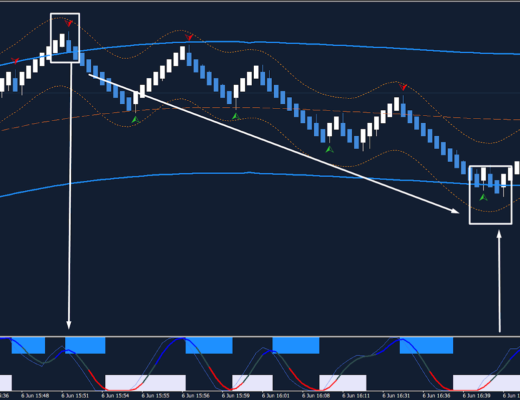How to use the cloud gap pattern
The cloud gap pattern is a candlestick pattern that allows you to track the dynamics of value and pivot points. It is formed by two Japanese candlesticks, bullish and bearish.
A cloud gap appears at the chart’s beginning due to the influence of the bearish trend. And the latter should act for a long time. The model is forming in the area of significant support levels.
Visually, the pattern consists of candlesticks pointing in different directions. The bullish candlestick goes down quickly but closes above the opening point at the end of the period. Thus, it overlaps the bearish candlestick by about half.
Use in trading
The cloud gap pattern is quite rare on the chart. It indicates that the market is unstable at a fixed low. Bullish sentiment then influences the situation, and traders close their short positions. In this case, the gap is a severe resistance factor. Therefore, it is considered a reversal pattern.
The key points when using the pattern in a trading strategy are support and resistance. There are two ways of using the pattern. In the first case, trading will be quite risky:
– after assessing the situation, the player can open a long position;
– stop loss should be outside the support level;
– take profit is fixed at the resistance level closest to the position.
With a more cautious approach, the best solution is to gather additional information. The most common way to do this is to use technical indicators. If there is a confirmation of the results, opening a long position will be the next step.
Advantages and disadvantages
Like any indicator, the cloud gap has its pros and cons. The former include:
– easy to identify on the chart;
– the use of the pattern is subject to clear rules in trading strategies;
– allows the trader to identify a favourable time to enter the market in the early stages of a bullish trend;
– the trader reduces the risk of loss and increases the chances of profit.
At the same time, this pattern is not suitable for everyone. It has some disadvantages that can significantly affect the outcome. Among them are:
– the figure rarely appears on the chart;
– it requires confirmation using other patterns;
– a large number of reversal patterns near the pattern indicates the accuracy of the forecast.
The pattern occurs in all time frames. However, the optimal period is when it appears on the daily chart.
It is important to note that this pattern can give false signals, especially on smaller timeframes where the probability of false results increases due to market noise.










